
views
Recognizing Signs of Infection
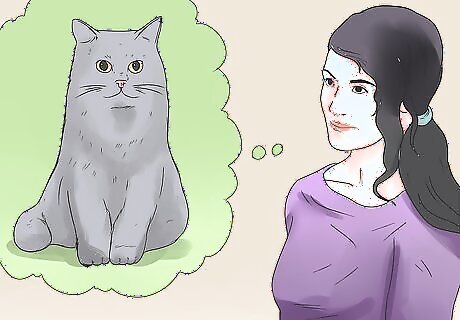
Be aware that the symptoms of Feline Immunodeficiency Virus (FIV) may not present themselves for several months after infection occurs. FIV is a slow worker - once your cat acquires the infection (usually through fighting), the presence of the virus is not made evident until 2 to 6 months after the initial infection. At the time of the fight, the cat may have punctures, scratches, and possibly an abscess from bacterial infection, but the FIV will not make him ill at this early stage.
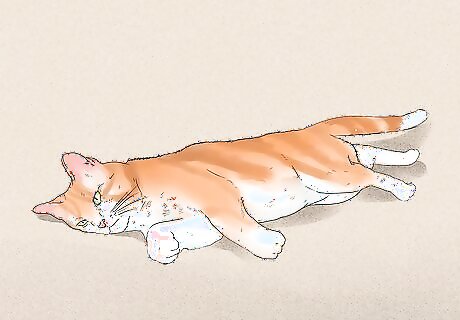
Look for transient symptoms of infection. It will only be 2 to 6 months after contracting the virus that the cat will begin to show transient symptoms such as fever, lethargy, enlarged lymph nodes, and appetite loss. These symptoms will pass after a week or two. This phase coincides with the virus multiplying in the blood stream, which is known as the viraemic phase. Once this phase subsides, the cat will return to full health and can remain apparently healthy for months, or even years, before the FIV makes him ill again.
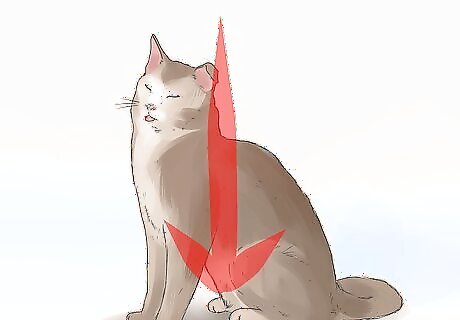
Understand that the secondary phase of infection has its own symptoms. In the secondary phase of infection, illness is caused by the virus gradually attacking the white cells used to fight off infection. As a result, the cat's immune system is weakened and simple infections may run out of control. This is known as the secondary phase of FIV. It can be identified by the list of symptoms described below.
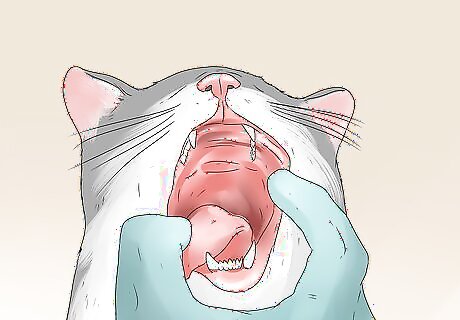
Look for signs of stomatitis and gingivitis. Even in full health, a cat's mouth is full of bacteria. However, without a healthy immune system to hold them in check, the bacteria start to multiply, resulting in an inflamed mouth (stomatitis) and/or sore gums (gingivitis).
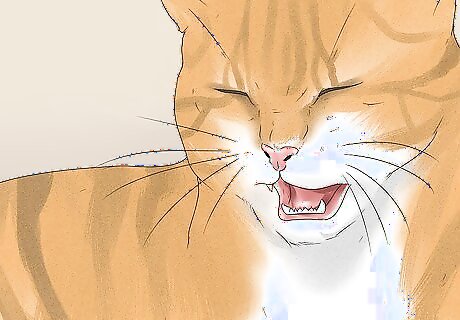
Monitor your cat for signs of rhinitis. Rhinitis refers to the infection of the nasal passages. The nose acts as a filter for bacteria in the air. When the immune system is weak, it allows opportunistic bacterial invaders to set up infection in the nasal chambers. Chest infections can also occur during this secondary phase of infection. This occurs as part of a similar process to rhinitis, where inhaled bacteria grow out of control.
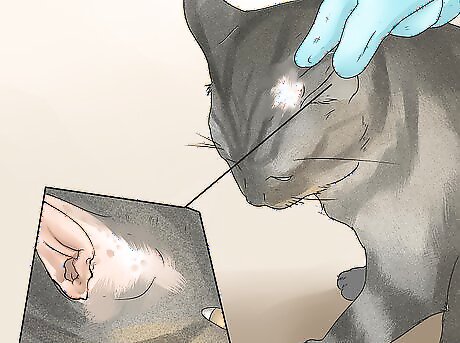
Check your cat for fungal infections. Fungi are all around us in the environment. This is not usually a problem because the immune system polices the skin and stops fungal infections from taking hold. However, a compromised immune system means conditions like ringworm and fungal infections can more easily get a grip. Poor skin immunity also allows the normal bacteria on the skin's surface to grow out of control and set up bacterial infections.
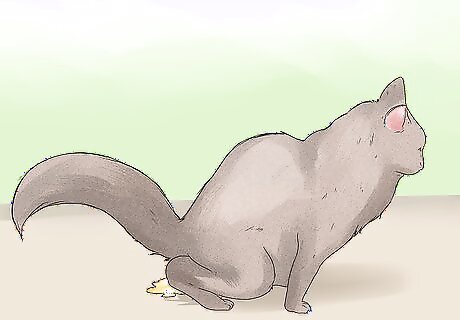
Pay attention if your cat develops diarrhea. During the secondary phase of FIV infection, the bacterial balance within the cat's gut is not kept in check. This causes bacterial overgrowth which can lead to diarrhea.
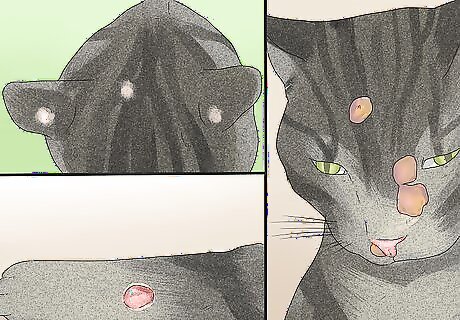
Look for signs that your cat has developed other medical conditions. When a cat has been infected with FIV, viruses which don't normally cause a problem may take advantage of their weakened immune system, causing secondary infections, such as cowpox. Cowpox causes inflamed, ulcerated sores on the skin.
Having Your Cat Tested for FIV
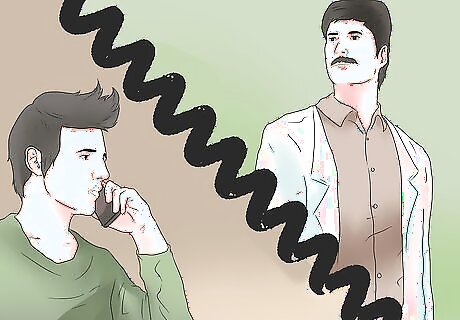
Call your vet to set up an in-house ELISA test for your sick cat. If your cat is ill and the vet suspects FIV, the first test will be an in-house ELISA test. The vet will draw about 1 milliliter (0.03 fl oz) of blood from the cat, then send if off to the lab for testing. The results are usually back within 15 minutes. If the test is negative but the cat has a history suggestive of FIV exposure, a second test should be run 6 weeks later. Only if this second test is also negative can the vet definitely say the cat does not have FIV.
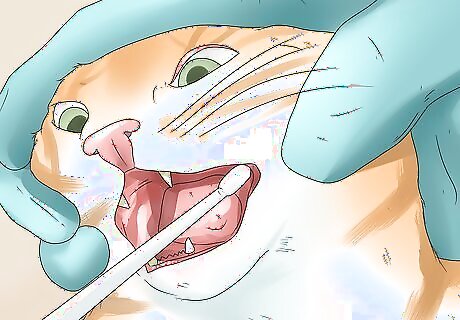
Ask your vet to send your cat's blood for a PCR test. If the ELISA test comes back positive, then you can ask your cat's vet to send your cat's blood for a PCR test. This test is done at an external laboratory and can take up to a week to get the results back. PCR tests detect tiny amounts of viral DNA in the cat's blood. A positive test means the cat has the FIV virus in his blood stream. Due to the risk of false positives from the ELISA test, a positive result from this test should be confirmed via another type of test as a fail-safe. Most vets send the blood sample to a commercial laboratory for a PCR test, which looks for fragments of viral DNA. If this is positive, then sadly the cat has FIV. If the PCR test is negative, it is possible your cat is fighting off the infection. In this circumstance a repeat ELISA test in 6-weeks' time should come back negative, meaning your cat was exposed to the FIV but his immune system fought it and won.

Understand the diagnosis process. Diagnosing FIV is a complex process, but in summary the following combination of test results indicate that a cat is actively infected with FIV and may become ill as a result in the future. Any one of the following indicates active infection: A single ELISA test positive result, followed by a PCR positive result Two ELISA positive results, confirmed by a PCR positive result. A positive PCR result.
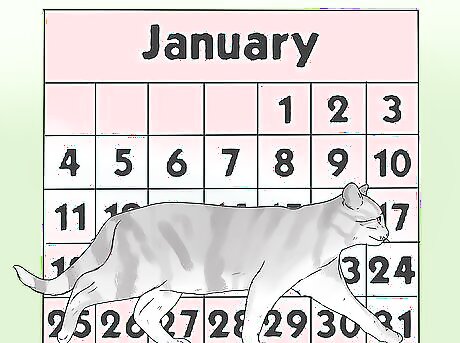
Realize that a healthy cat with FIV may remain healthy for years. A cat that is well at the time of diagnosis may stay in good health for years and years. Even if your cat is healthy, however, it's important to keep in mind that FIV weakens the body's immune system. This means your cat will be more vulnerable to developing complications with routine infections. However, prompt treatment with antibiotics at the first sign of sickness is usually sufficient to prevent this. More and more FIV positive cats are living into old age, and frequently FIV cats do not die from their infection but from other causes - including old age!

Talk to your vet about the chances of recovery. You took to your cat to the vet because he was ill and the vet saw symptoms of FIV. If he is not responding as expected to treatment, then your cat's future is less certain. If he already has complications, such a pneumonia, then these secondary infections could easily overwhelm his immune system. Talk to your vet about his chances of recovery. You cat may have a chance with supportive care (intravenous fluids and antibiotics), but if he has developed serious issues (such a complete depletion of his white cell reserves) then he may already have permanent damage and not be able to win this fight.




















Comments
0 comment